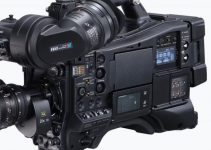The DJI Mavic Pro is not only a relatively affordable drone with a plethora of excellent video features, but it also provides some advanced flying options that can help you to hone your aerial videography skills by adopting some new unconventional techniques.
Thanks to the drone’s ability to take photos at set time intervals, in addition to the Point of Interest flying feature, you can use the Mavic Pro to create aerial hyperlapse shots that orbit a particular object. In the next video tutorial, Dylan Young will walk you through the entire process from setup to editing.
To start off, fly your drone over the center of the orbit (the Point of Interest). Once you’ve done so, navigate to the app settings and select Point of Interest mode. Press the button labeled Record POI and then adjust the radius and altitude of the orbit to your liking. It’s essential to avoid any potential obstacles when you’re making your adjustments.
As soon as you’ve entered your settings, hit the Apply button and adjust your orbit velocity. You can choose to have the orbit go left or right and then change your speed. Make sure that the velocity is not too slow or else you’ll end up with some noticeable camera shakes in your final composition.
Now that your drone maneuvers have been set, switch from the video recording mode to photo mode. In the settings, change the photo mode to timed shot at 2-second intervals.
Once that’s set, begin taking photos by pressing the shutter button. Ideally, you’ll want to make as many pictures as necessary to complete one orbit, but the duration of this process is entirely your prerogative.
When you’ve completed shooting, dump all the photos to your computer by placing them all in one folder. Inside of Premiere Pro CC, import your footage by clicking on a single file in the folder, select Image Sequence and click Import. As a result, the NLE will combine all your images into one sequence.
Now, add the image sequence to your timeline and adjust the framing as necessary by changing the scale, position, and/or rotation. To make the hyperlapse seem more steady, you can use the Warp Stabilizer. Before doing so, you’ll need to nest the clip by right-clicking on the image sequence. Afterward, you can add the Wrap Stabiliser effect onto the nested clip and leave the software to do its magic by adding the final touches to your orbiting hyperlapse.
[source: Dylan Young]
Order Links:
DJI Mavic Pro (Standard Bundle) (B&H, Amazon)
Disclaimer: As an Amazon Associate partner and participant in B&H and Adorama Affiliate programmes, we earn a small comission from each purchase made through the affiliate links listed above at no additional cost to you.




